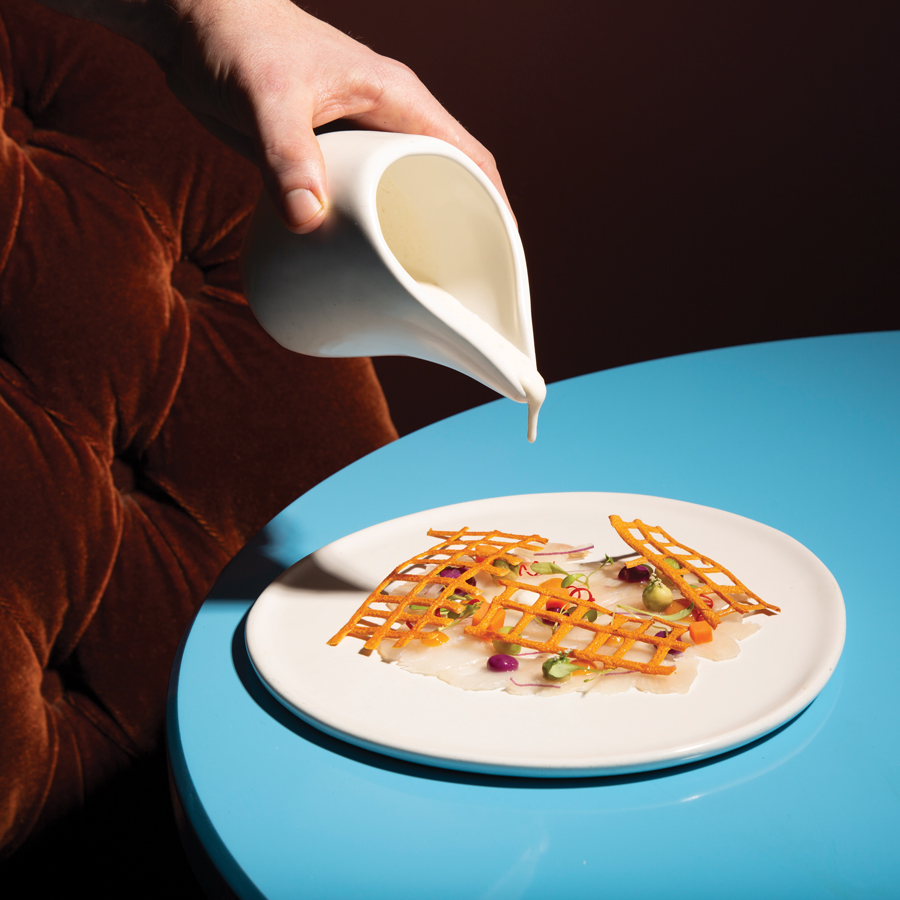
Photograph by Martha Williams
I haven’t set foot in a restaurant since my prepandemic birthday dinner at Kimball House in early March. In the months since, I’ve become surprisingly comfortable with cooking three meals a day for myself, many of them based on what I can pull from my garden. Sitting alone at the gigantic, industrial-style table where I eat (and which now doubles as a charging station for all my suddenly indispensable devices), I wonder what happened to the woman whose appetite for restaurant food was insatiable, the one who collected Michelin-starred meals all over the globe and couldn’t hear other people gloat about their culinary discoveries without burning with envy.
Am I such a wimp now? While I no longer wipe down every banana that comes into the house with isopropyl alcohol or toss groceries into the freezer to decontaminate them, I am far from relaxed about exposing myself to a deadly virus by entering into a renewed relationship with indoor dining. And why would I want vulnerable humans to prepare and serve food just so that I can indulge? (I’m also trying to square that sentiment with the knowledge that many of these workers—and the restaurants that employ them—conversely might not be able to financially survive without willing diners.) As someone who grew up a motherless child with an anarchist father, I knew nothing about restaurants until I went to a Greek taverna off the Boulevard Saint-Michel in the Latin Quarter of Paris when I was almost 20. I can easily revert to a lifestyle of going without.
Very few of my fellow food critics nationwide are publishing rated restaurant reviews. Whether or not we sneak out for meals in ad hoc outdoor settings, we know that expressing our candid opinion (“the ribs were gristly and undercooked” or “the sandwiches are overpriced”) is now a no-no. True restaurant reviews analyze a complex and potentially stable operation. But there currently is no potential for stability. We critics are mindful of the historical and social context into which restaurants fit, and we compare each new place to what else is on the scene at the moment and emerging more widely. There isn’t enough long-range data to do any of that now.
Yes, some new places have opened. Some fine-dining chefs have turned to smoking meats or frying chickens to keep their business going. Pop-ups are mushrooming. But have I heard of a concept likely to bring back the joy of dining out? Such a concept, for me, is all but impossible these days. Sitting in some parking lot, paying the same price as in the before times, when groovy decor and access to indoor restrooms were part of the deal, doesn’t make emotional sense. Also, I would have to rebuild a crew of dinner dates willing to share my space, and I don’t know where to start with that.
When I can feel truly safe eating out again, I intend to return to my basic mission as a critic: to deliver a highly opinionated yet fair representation of a given restaurant based on several visits. That mission shouldn’t change. But I also will return to criticism with renewed empathy for how difficult it is to keep a restaurant alive.
This article appears in our November 2020 issue.













